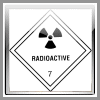| Author |
Message |
    
Mrgoody
Junior Member
Username: Mrgoody
Post Number: 47
Registered: 1-2005
| | Posted on Tuesday, March 11, 2008 - 1:13 am: | 


|
Hello guy's:I am wondering if there's a certain length in which to grounding a mobile antenna and a base antenna with some braided silver coated copper wire |
    
Hyperno_1979
Advanced Member
Username: Hyperno_1979
Post Number: 577
Registered: 12-2005

| | Posted on Tuesday, March 11, 2008 - 6:03 am: | 


|
Gary,
From what i've been told over the years by guys that know a lot more than i do is the best ground is the shortest.
Regards,
CEFFFCEF
Bob
CEF703/CVC26
269 Hunter Valley
NOT allowed to hold a passport....
|
    
Dale
Senior Member
Username: Dale
Post Number: 1319
Registered: 12-2002
| | Posted on Tuesday, March 11, 2008 - 7:06 pm: | 


|
thats what ive been told also use shortest runs
possible to make it from point a to point b
dale/a.k.a.hotrod
cef426
cvc#64
|
    
Foxhunter
Junior Member
Username: Foxhunter
Post Number: 36
Registered: 4-2008

| | Posted on Friday, July 11, 2008 - 12:39 am: | 


|
From what I've read from several fairly good sources is that to keep the grounds short as possible. The "number" (in feet) to beware of is any length of ground-strap that gets even close to 1/4 (25%) of frequency wavelength. Then the groundstrap begins acting as an actual part of the antenna/radiator, becoming RF hot. For CB it seems most guys who RF Ground keep them under 4ft-----preferrably 3ft or less. Here's an article on groundstraps that may be useful I'll paste....The article by a well-respected Ham operator clearly states the grounds should actually be 2ft or less though.
Ground Straps
One of the most misunderstood concepts is the difference between DC and RF ground (neither one can be considered a ground plane). A ground strap may work perfectly as a DC ground, but at some frequency that same ground strap will make a perfect antenna! We all know that an inductor can provide a good DC ground, but look like an open circuit to RF. And that a capacitor can provide a good RF path to ground, but not a DC path. Our ground strap, like any piece of wire, has both inductive and capacitive reactances. These reactances change as the frequency changes. For any given value of reactance, as the frequency goes up, inductive reactance also goes up, but capacitive reactance goes down. When inductive reactance and capacitive reactance in any given piece of wire are equal, that wire will become an antenna, and ceases to be an RF ground. There are a few things we can do to assure both a good RF and DC ground.
One of these is to use braided wire. Not just any braided wire mind you, but one which is flat and wide. RF flows at the surface rather than through the wire, and flat braid has more surface area for any given current carrying capacity. Thus it provides less resistance to RF than an equivalent round wire. It also has more capacitive reactance which increases the self resonant point. Flat braid is also much more flexible and less likely to fail due to repeated flexing.
The shield from RG8 works well if the length of the strap is short (under 10 inches or so). Just take care when you strip off the outer jacket that you don't cut through the shield itself. Discard any that is corroded or discolored. Flatten it out by pulling it over a rounded surface. A large, round screwdriver shaft works well for this purpose.
For longer lengths, one inch wide braid is a better choice. **In any case, the requisite length shouldn't exceed 2 feet**. If it has to be longer, then heavy copper flashing, like that used by roofing companies, is the material of choice. Remember, the ground strap must present a low impedance connection to effectively shunt RF to ground. This is especially true if you're using an auto-coupler, as the ground side connection must have a (much) lower impedance than the radiating element. |
|



